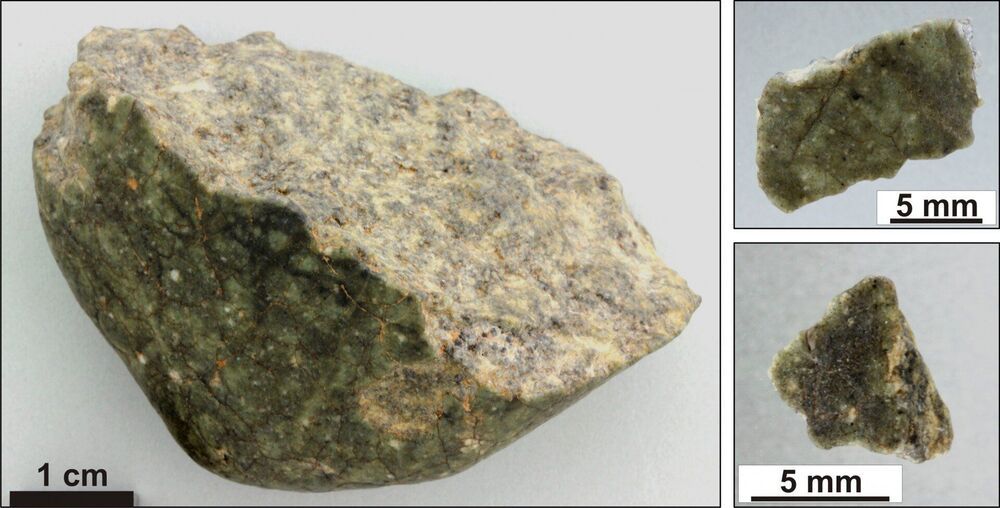A team of European researchers discovered a new high-pressure mineral in a lunar meteorite which is helping to explain what happens to materials within the extreme pressures of the Earth’s mantle.
The new mineral donwilhelmsite is the first high-pressure mineral found in meteorites with application for terrestrial sediments dragged deep into the Earth mantle by plate tectonics. Mainly composed of calcium, aluminum, silicon, and oxygen atoms, donwilhelmsite was discovered within the lunar meteorite Oued Awlitis 001 found in 2014 in the Western Sahara.
The meteorite is compositionally similar to rocks comprising the Earth’s continents. Eroded sediments from these continents are transported by wind and rivers to the oceans, and subducted into the Earth’s mantle as part of the dense oceanic crust. Once dragged to depths of about 460–700 km, their constituent minerals transform at high pressures and high temperatures existing at those depths into denser mineral phases, including the newly discovered mineral donwilhelmsite. In the terrestrial rock cycle, donwilhelmsite is therefore an important agent for transporting continental crustal sediments through the transition zone of the Earth’s mantle (460−700 km depth).
